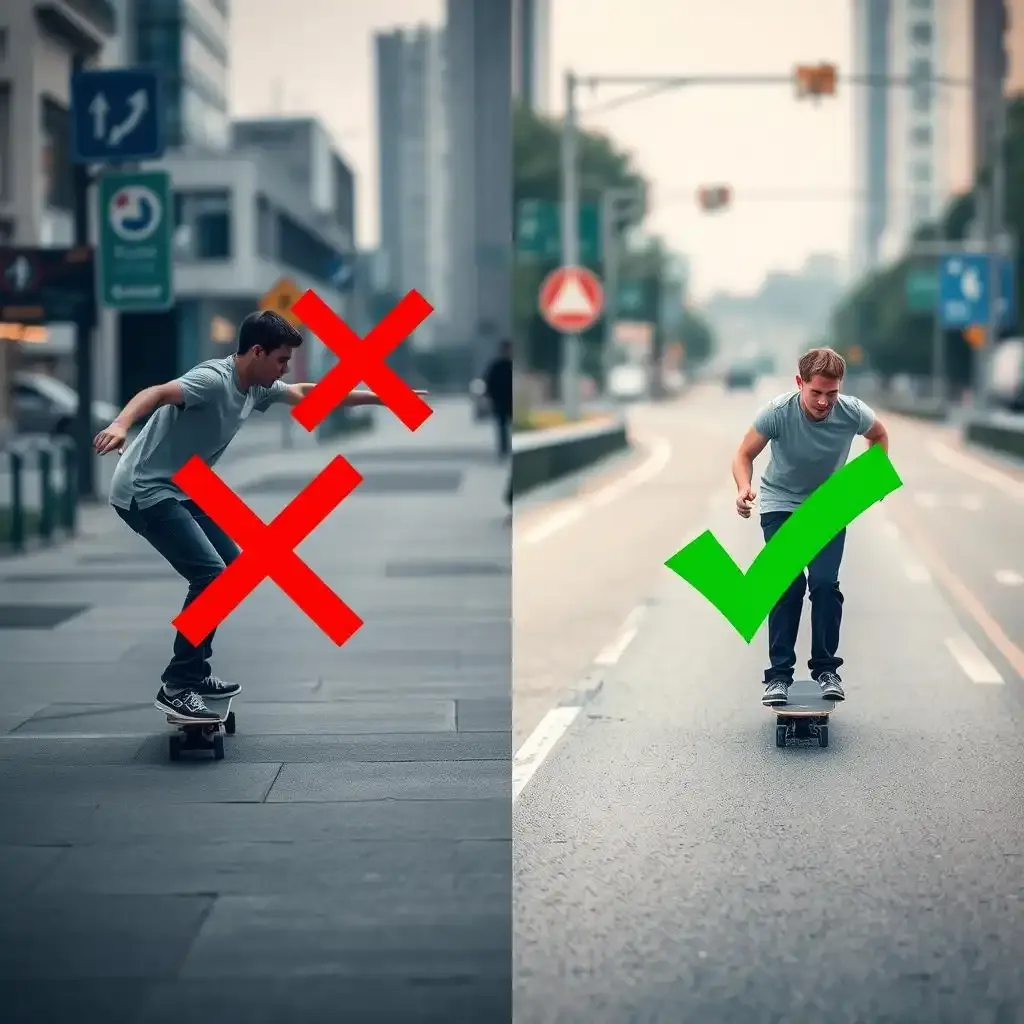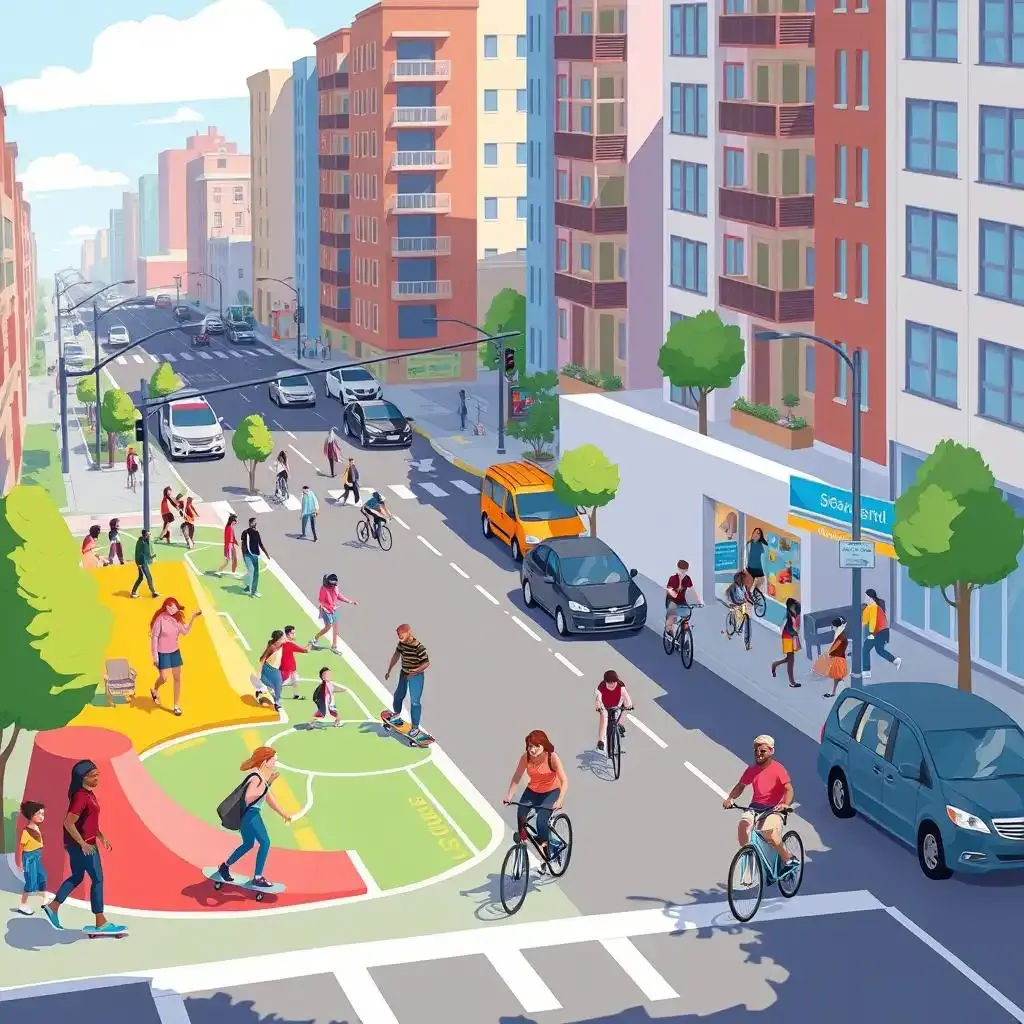Table of Contents
Ever seen someone gliding down the street on a skateboard and wondered if they're actually allowed to be there? The question of should skateboards be allowed on roads and pavements is more complicated than it looks. In many places, riding a skateboard on the sidewalk is a big no-no. Think about it: people are walking, maybe pushing strollers, or walking their dogs. A skateboard zipping by can be a recipe for bumped ankles and startled jumps. But what about the road? Cars, buses, and bikes share the asphalt, so where does that leave the humble skateboarder? This isn't just about annoying pedestrians or holding up traffic. It's about safety, about knowing the rules, and about figuring out how everyone can share public spaces without anyone getting hurt. Let's roll into the details and see what the deal is.
Key Point | Details |
|---|---|
Legality in the UK | Skateboarding on pavements is generally illegal. Road use is technically allowed in some cases but discouraged. |
Road Rules | If allowed on roads in the UK, it's typically during daylight hours on roads with a speed limit under 31 mph. |
Safety Concerns | Skateboards aren't considered vehicles and can be dangerous for riders and others on the road or pavement. |
Arguments Against Pavement Use | Risk of accidents and injuries to pedestrians is a major concern. |
Varied Regulations | Laws about skateboarding on roads and pavements differ depending on the location. Always check local rules. |
Should Skateboards Be Allowed on Roads and Pavements: Navigating the Legal Landscape
Should Skateboards Be Allowed On Roads And Pavements Navigating The Legal Landscape
It’s permitted on roads, but with a bunch of caveats. Like, you can only do it when the sun's out, and only on roads where cars aren't zooming by at crazy speeds – think less than 31 miles per hour. It's a bit like saying you can swim, but only in the shallow end, during daylight, and while wearing a bright orange hat. Seems a bit specific, right? You can check out more on whether skateboards are vehicles to understand why they don't quite fit into typical road rules.Now, visualize this: a kid, maybe ten years old, gets a brand new skateboard for their birthday. They excitedly take it outside, naturally heading for the smooth pavement in front of their house. Suddenly, a very official-looking person tells them, "Oi! No skateboarding here!" Confused, the kid might then venture onto the road, only to have cars whizzing past, making it feel super dangerous. It's a bit of a no-win situation, isn't it? It highlights the confusing reality of where you can and can't actually ride. And if you're wondering about gear, you might find it interesting to know if skateboard helmets can be used for snowboarding – it shows how safety gear crosses different activities, but the rules for where you can do those activities are so different.
Location | Legality (UK) | Considerations |
|---|---|---|
Pavements (Sidewalks) | Generally Illegal | Safety of pedestrians |
Roads | Permitted under specific conditions | Daylight hours, speed limits |
Cycle Lanes | Technically Illegal | Designated for cyclists |
The core of the issue is that skateboards don’t neatly fit into existing transportation categories. They aren't cars, they aren't bikes, and they definitely aren't pedestrians. This leaves lawmakers scratching their heads, trying to shoehorn them into rules that weren't really designed for something with four wheels and a rider doing ollies. It's like trying to fit a square peg into a round hole, and sometimes, you just end up with splinters – or in this case, confusing laws. This kind of legal gray area also brings up questions about safety. Like, are skateboards dangerous in the first place? The answer might surprise you.
Safety First: Why the Debate Over Skateboards on Roads and Pavements Matters
Think of the Sidewalk Like a Playground
Okay, so think about this: you're on the playground, right? Kids are running around, maybe someone's building a sandcastle, and a little one is just learning to walk. Now, imagine someone comes zooming through on a skateboard, not really looking where they're going. Crash! Someone's going to get hurt, right? That's kind of how it is with skateboards on sidewalks. Sidewalks are for people walking, maybe pushing strollers or walking their dogs. If a skateboard comes zipping by too fast, it's like a rogue soccer ball in the middle of a picnic. It can cause some serious trouble. I remember once, I saw a skateboarder accidentally clip a woman's bag, and her phone went flying! Luckily it was okay, but it could have been much worse. It makes you think, in these crowded spots?
Roads Can Be Like a Racetrack for Cars
Now, let's flip it and think about roads. Roads are made for cars, big metal things that go super fast. Imagine you're a tiny skateboarder trying to share the road with these speedy giants. It can feel a bit like being a snail trying to race a cheetah! Even if you're a super skilled skateboarder, drivers might not see you, or they might not expect you to be there. Plus, what happens if you hit a little bump or a crack in the road? You could lose your balance and fall right into the path of a car. It's a scary thought! Some people might say, "Well, skateboarders should just be more careful!" And yeah, that's true, but even the most careful person can have an accident when they're sharing space with much bigger, faster vehicles. It’s why understanding if is so important – it changes how we think about sharing the road.
Location | Potential Hazard |
|---|---|
Pavements | Collisions with pedestrians, especially children and the elderly. |
Roads | Accidents involving cars and other vehicles, difficulty being seen by drivers. |
Finding a Balance: How Can We Make Roads and Pavements Safe for Everyone, Including Skateboarders?
Finding A Balance How Can We Make Roads And Pavements Safe For Everyone Including Skateboarders
Building Bridges, Not Barriers
Okay, so imagine our roads and sidewalks are like a giant playground that everyone needs to share. We've got people walking, kids on scooters, and yeah, skateboarders too. The trick is, how do we make sure everyone can play without bumping into each other or getting hurt? It's like sharing your toys – sometimes you gotta take turns, and sometimes you need to find a different spot if you're playing a really wild game. I think a big part of it is just understanding where everyone's coming from. Like, if you're walking with your little brother, you probably don't want a skateboarder whizzing super close. And if you're on a skateboard, you probably don't want to crash into someone who's not paying attention. It's about seeing things from each other's wheels, or shoes! We need to remember that skateboarders aren't pedestrians in the usual sense, but they're also not cars.
Creating Zones for Rolling Fun
Now, what if we had special zones just for skateboarding? Think of it like building a skatepark, but instead of just ramps and bowls, it could be designated paths or areas where skateboarders are welcome and others know to expect them. It's like having a bike lane, but for skateboards! This way, skateboarders have a safe place to ride without worrying about bumping into walkers on the sidewalk, and drivers know to keep an eye out in those specific spots. Plus, it could even make things safer on the roads because if there are good places to skate, maybe fewer people would try to skate where it's really dangerous. It's all about giving everyone their own space to do their thing. Have you ever wondered where skateboarding came from? Maybe if we think about its roots, we can find creative solutions for its future.
Learning to Share the Streets Smartly
But even with special zones, skateboarders will still need to use roads and pavements sometimes. That's where learning and being aware comes in. For skateboarders, it's about knowing the rules – like maybe sticking to quieter streets or wearing bright clothes so drivers can see them. And for drivers and walkers, it's about being a bit more patient and looking out for skateboarders, just like you'd look out for bikes. Maybe schools could even teach kids about sharing the streets safely, whether they're walking, biking, or skating. It's all about being considerate and understanding that we all use these spaces. It’s similar to understanding – it applies across different activities.
The Balancing Act
So, where does all this leave us? The debate about whether should skateboards be allowed on roads and pavements isn't going to disappear overnight. There are real concerns about safety for both skateboarders and everyone else using the roads and sidewalks. Simply banning skateboards from everywhere isn't really fair, and it doesn't stop people from riding. Perhaps the answer lies in designated areas, clearer rules, and a bit more understanding from all sides. Until then, the wheels of this discussion will keep turning.